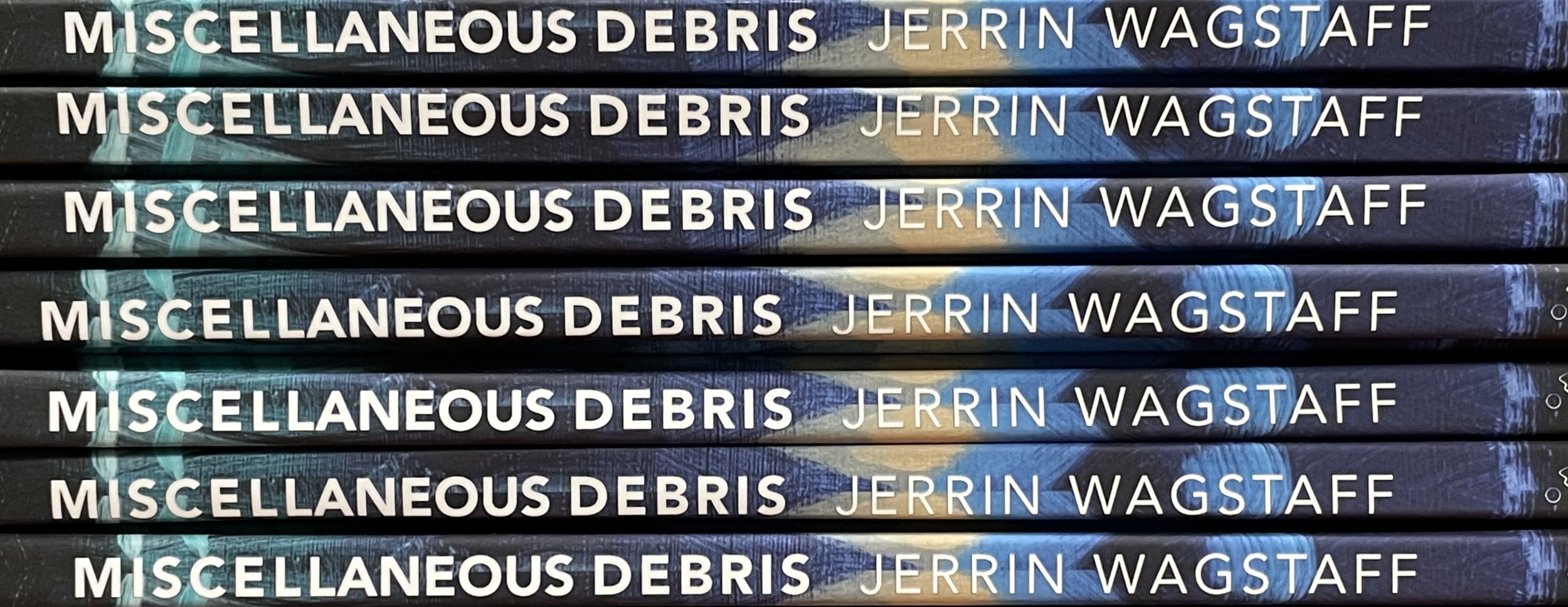Catalogue for the exhibition ‘Miscellaneous Debris’ is now available for purchase. Contact the artist to order a copy.
ESSAY FROM THE ‘MISCELLANEOUS DEBRIS’ CATALOGUE
Jerrin Wagstaff: Fragmented Spectacle
Painter Jerrin Wagstaff conjures his compositions from an intuitive mediation of images, through a studious technique and an alchemical materiality. A shifting weave of brushstrokes resolves into a stand of sports fans. A heap of post-disaster debris dissolves into an earth-toned sea of shards and spikes. Variations of interior scenarios and landscapes breathe themselves into and out of resolution, flickering between abstraction and information, eliciting unsatisfiable curiosity and undeniable emotion.
Wagstaff’s dualized approach takes the physicality of painting into account even as he selects and responds to his sourced imagery. Neither memory nor invention, he collects and internet-surfs for scenes to riff on, seeking juicy candidates for interpretation. The works that are more totally abstract have a JMW Turner energy, but filtered through Michael Bay. When Turner wanted to paint “abstractly” but his milieu lacked that vocabulary, he chose phenomena like clouds, storms, steam, ocean tides and rain which in themselves possessed abstract textural and chromatic qualities. Wagstaff echoes that except with explosions, debris fields, motion blur, and digital artifacts. And sometimes the paint just asserts itself.
Within this aesthetic perspective, certain themes emerge across Wagstaff’s practice. Through representations of disaster and success in American life, visions of natural and wartime destruction, violence, celebration, desire, absurdity, wealth and power, fame, voyeurism and self-curation, what links it all is a sort of update on Debord’s Society of the Spectacle. Debord wrote, “In societies where modern conditions of production prevail, all of life presents itself as an immense accumulation of spectacles. Everything that was directly lived has moved away into a representation.” Understanding the dynamic of social media as a version of this hollow and narcissistic spiral, Wagstaff wonders whether it is possible to inject humanity back into this cycle -- and the dynamic of abstraction in this context is one attempt at doing so.
Abstraction slows down the process of cognition and absorption of information. So while lovingly, painstakingly copying banal images into analog mediums would be a statement, without nuance such a gesture adds nothing to the conversation. Abstraction’s operations of omission and complexification open up a space for emotional contemplation in both the artist and the viewer. “Painting is an old-fashioned way to respond to the digital age,” says Wagstaff. “But here we are.”
-- Shana Nys Dambrot, Los Angeles 2020
